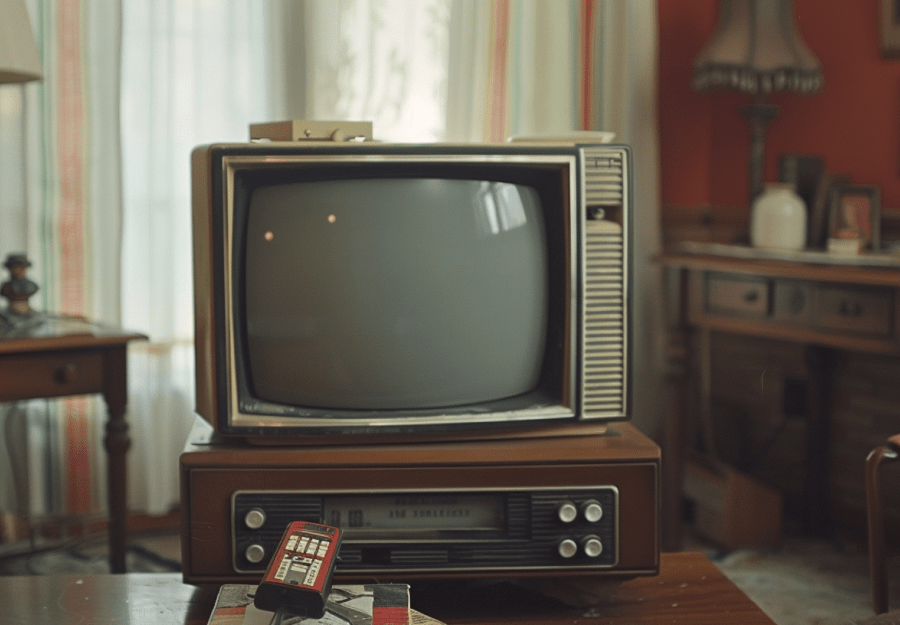
The History of the TV Remote Control
|
|
Time to read 3 min
|
|
Time to read 3 min
Life before the invention of the remote control was hard.
Peeling ourselves off the couch every time we wanted to turn up the volume or change channels? It's downright barbaric.
Needless to say, the introduction of the first remote for TV was a game changer for entertainment lovers everywhere.
Join us for a quick trip down memory lane to see how the remote control has evolved since it first came on the scene nearly 70 years ago.
The concept of remote control technology predates TV remotes. Brilliant European scientists and inventors, including Oliver Lodge, Guglielmo Marconi and William Preece, plus the venerable Nikola Tesla, are to thank for our intense clicker habits. They laid the groundwork for wirelessly controlling technology.
Tesla, for example, filed a patent in 1898 for his technology to control moving vehicles without wires. He showed off how he could use it to control a boat at Madison Square Garden. His invention nearly made some major waves, but the U.S. Navy, his intended client, didn't think the technology was sturdy enough for war.
The remote control concept endured, however. And eventually made its way to lots of other places, including TVs.
The first TV remotes designed to control televisions appeared in the living room in 1950s. In 1950, Zenith Radio Corporation released the first TV remote, Lazy Bones (best name ever, right?). It allowed viewers to control their TV from the couch … as long as the cord from the remote could reach the couch. Alternate name suggestion: Trip Wire. Whomp whomp.
Speaking of great names, the Blab Off was introduced in 1952. This wired remote had a simple function: turning the sound on and off. It was a clever way to mute commercials, a feature that might still be appreciated today.
We're exploring the possibility of connecting one to Great Uncle Lou at our next family gathering.
Wireless remotes soon followed. First, there was the Flashomatic in 1954.
It shined a beam of light toward a sensor on the TV. The ad fails to mention that the sensors respond to all kinds of light sources, not just the beam from the remote. Best suited for cloudy locations to avoid spontaneous channel changes.
Then came the Zenith Space Command in 1956.
Instead of light beams, it was mechanical and used ultrasonic sound frequencies to change channels - emitting a "click" sound when a button on the remote was pushed.
Fun Fact: That's where the term clicker hails from. The main issue with this remote control was that other sounds, like a dog barking or a branch scratching the window could activate it. Best suited for quiet spaces. The living room? Not so much.
Wireless remotes were a game changer. So much laziness. So great. Remotes became commonplace for so many different devices that they introduced a pain point many of us still struggle with today: remote overload.
Steve Wozniak (of Apple fame) to the rescue. In the 1980s, he started a company that introduced the first version of the modern universal remote control designed to control multiple devices.
The CORE (Controller of Remote Equipment) could "learn" various remote signals in order to control several different devices. It was also the first remote that connected to a computer to get software updates.
Ultimately the CORE bombed because it was too complex for the average person to use. (Hmm… maybe not that different from today's traditional universal remotes after all).
Two years later, Memorex came along with its take on the calculator ... we mean universal remote... the CP8.
If your elderly loved one is overwhelmed by a stack of remotes, consider a universal remote.
JubileeTV's voice remote for seniors is designed for simplicity and ease of use.
JubileeTV also offers a unique "Telescope" feature, allowing family members to assist their elderly loved ones remotely.
With Telescope, families can see what's playing on their loved one's TV and remotely control it from the JubileeTV mobile app.
This feature makes caring for an elderly loved one easier. It's is especially helpful for caregivers who want to ensure their loved ones can easily access their favorite shows and channels.
The evolution of the TV remote control is a testament to our ongoing quest for convenience and technological advancement.
From wired to wireless, light beams to ultrasonic sound, and single-purpose to universal, the remote control has come a long way.
With innovative solutions like JubileeTV's simple universal remote and Telescope feature, we can continue to enhance our entertainment experiences while staying connected with loved ones.





